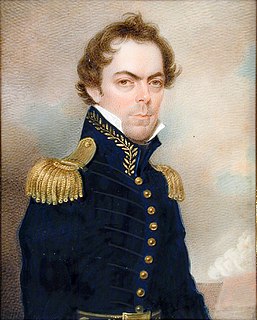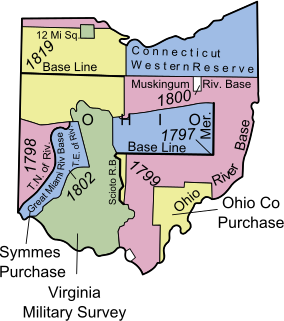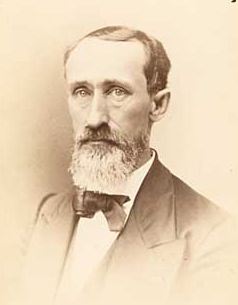
The Lakota are a Native American tribe. Also known as the Teton Sioux, they are one of the three prominent subcultures of the Sioux people. Their current lands are in North and South Dakota. They speak Lakȟótiyapi—the Lakota language, the westernmost of three closely related languages that belong to the Siouan language family.

The Seminole Wars were three related military conflicts in Florida between the United States and the Seminole, citizens of a Native American nation which formed in the region during the early 18th century. Hostilities commenced about 1816 and continued through 1858, with two periods of uneasy truce between active conflict. Both in human and financial cost to the United States, the Seminole Wars were the longest and most expensive of the United States-American Indian Wars.
The Seminole are a Native American people originally from Florida. Today, they live in Oklahoma and Florida, and comprise three federally recognized tribes: the Seminole Nation of Oklahoma, the Seminole Tribe of Florida, and Miccosukee Tribe of Indians of Florida, as well as independent groups. The Seminole people emerged in a process of ethnogenesis from various Native American groups who settled in Spanish Florida beginning in the early 1700s, most significantly northern Muscogee Creeks from what is now Georgia and Alabama. The word "Seminole" is derived from the Muscogee word simanó-li, which may itself be derived from the Spanish word cimarrón, meaning "runaway" or "wild one". Seminole culture is largely derived from that of the Creek; the most important ceremony is the Green Corn Dance; other notable traditions include use of the black drink and ritual tobacco. As the Seminole adapted to Florida environs, they developed local traditions, such as the construction of open-air, thatched-roof houses known as chickees. Historically the Seminole spoke Mikasuki and Creek, both Muskogean languages.

James Gadsden was an American diplomat, soldier and businessman after whom the Gadsden Purchase is named, pertaining to land which the United States bought from Mexico, and which became the southern portions of Arizona and New Mexico. James Gadsden served as Adjutant General of the U. S. Army from August 13, 1821 – March 22, 1822. Between 1853 and 1856, he served as U. S. Minister to Mexico. He was known commonly as General Gadsden, although he never had a rank above Colonel.

The Ohio Lands were the several grants, tracts, districts and cessions which make up what is now the U.S. state of Ohio. The Ohio Country was one of the first settled parts of the Midwest, and indeed one of the first settled parts of the United States beyond the original 13 colonies. The land that became first the anchor of the Northwest Territory and later Ohio was cobbled together from a variety of sources and owners.

An Indian reservation is an area of land tenure governed by a federally recognized Native American tribal nation under the U.S. Bureau of Indian Affairs, rather than by the government of the state in which it is located. The 326 Indian reservations in the United States are associated with specific Native American nations, often on a one-to-one basis. Some of the country's 574 federally recognized tribes govern more than one reservation, while some share reservations, and others have no reservation at all. In addition, because of past land allotments, leading to sales to non–Native Americans, some reservations are severely fragmented, with each piece of tribal, individual, and privately held land being a separate enclave. This jumble of private and public real estate creates significant administrative, political and legal difficulties.

The Menominee are a federally recognized nation of Native Americans, with a 353.894 sq mi (916.581 km2) reservation in Wisconsin. Their historic territory originally included an estimated 10 million acres (40,000 km2) in present-day Wisconsin and the Upper Peninsula of Michigan. The tribe currently has about 8,700 members.
Other Backward Class (OBC) is a collective term used by the Government of India to classify castes which are educationally or socially disadvantaged. It is one of several official classifications of the population of India, along with General Class, Scheduled Castes and Scheduled Tribes. The OBCs were found to comprise 52% of the country's population by the Mandal Commission report of 1980, and were determined to be 41% in 2006 when the National Sample Survey Organisation took place. There is substantial debate over the exact number of OBCs in India; it is generally estimated to be sizable, but many believe that it is higher than the figures quoted by either the Mandal Commission or the National Sample Survey.

The Ute Mountain Ute Tribe is one of three federally recognized tribes of the Ute Nation, and are mostly descendants of the historic Weeminuche Band who moved to the Southern Ute reservation in 1897. Their reservation is headquartered at Towaoc, Colorado on the Ute Mountain Ute Indian Reservation in southwestern Colorado, northwestern New Mexico and small sections of Utah.
Reservation is a system of affirmative action in India that provides historically disadvantaged groups representation in education, employment and politics. Based on provisions in the Indian Constitution, it allows the Indian government to set reserved quotas or seats, which lower the qualifications needed in exams, job openings etc. for "socially and educationally backward citizens."

The Buffalo Creek Reservation was a tract of land surrounding Buffalo Creek in the central portion of Erie County, New York. It contained approximately 49,920 acres (202.0 km2) of land and was set aside for the Seneca Nation following negotiations with the United States after the American Revolutionary War.

The Treaty of Moultrie Creek was an agreement signed in 1823 between the government of the United States and the chiefs of several groups and bands of Indians living in the present-day state of Florida. The treaty established a reservation in the center of the Florida peninsula.

The following timeline traces the territorial evolution of California, the thirty-first state admitted to the United States of America, including the process of removing Indigenous Peoples from their native lands, or restricting them to reservations.

Francis Russell Edward Cornell was an American lawyer, politician, and judge.

The Seneca mission, sometimes called the Buffalo Creek mission, was a Christian mission to the Seneca people living in and around the Buffalo Creek Reservation in western New York. It was maintained, by several leaders and under the supervision of numerous missionary societies, from the early to mid-19th century. Some Seneca people accepted the mission; others, including Red Jacket and his followers, were strenuously opposed. Missionaries affiliated with the Seneca mission, including Asher Wright, transcribed the Seneca language into the Roman alphabet and printed Christian literature in Seneca.

Aboriginal title in New York refers to treaties, purchases, laws and litigation associated with land titles of aboriginal peoples of New York, in particular, to dispossession of those lands by actions of European Americans. The European purchase of lands from indigenous populations dates back to the legendary Dutch purchase of Manhattan in 1626, "the most famous land transaction of all." More than any other state, New York disregarded the Confederation Congress Proclamation of 1783 and the follow-on Nonintercourse Acts, purchasing the majority of the state directly from the Iroquois nations without federal involvement or ratification.
The Pechanga Band of Luiseño Mission Indians is a federally recognized tribe of Luiseño Indians based in Riverside County, California, where their reservation is located. As of 2006, there were 1,370 members of the nation. The tribe owns the Pechanga Resort & Casino in Temecula and the naming rights to the San Diego sports arena now known as the Pechanga Arena.
Edith Turner, sometimes known as Edy Turner or Edie Turner, or by her personal name Wané Roonseraw, was a leader – often styled "chief" or "queen" – among the Nottoway people of Virginia in the eighteenth and nineteenth centuries.

Mount Olivet Cemetery is a cemetery in Salt Lake City, Utah. It was established on May 16, 1874 by an act of the U.S. Congress which granted 20 acres of land for public use as a cemetery. The first use of the cemetery was in 1877. The cemetery land originally consisted of exactly 20 acres and was part of the U.S. Army's Camp Douglas military reservation. Since that time, the allotment has been expanded and contracted; the present cemetery is approximately 80 acres.












